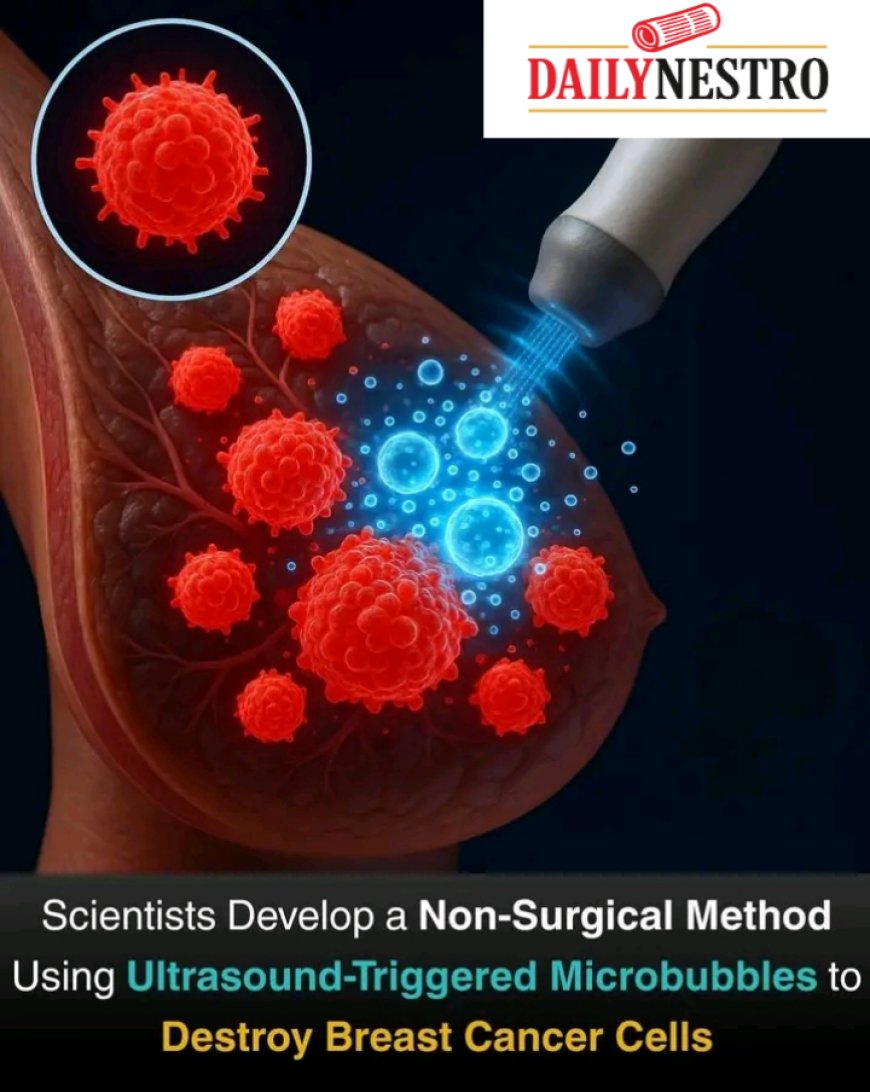JUST IN: Scientist developed a non-surgical method using ultrasound-triggered microbubbles to destroy breast cancer cell.
Scientist developed a non-surgical method using ultrasound-triggered microbubbles to destroy breast cancer cell

A Promising Breakthrough in Cancer Treatment: Ultrasound and Microbubble Therapy.
Recent advancements in cancer research are opening new doors to more targeted and less invasive treatments. One of the most exciting developments involves the use of ultrasound waves and microscopic gas-filled "bubbles" to deliver cancer-fighting drugs directly to tumors.
This innovative method relies on tiny, bubble-like particles—often referred to as microbubbles—that are engineered to seek out cancer cells. Once they reach the tumor, doctors use focused ultrasound waves to cause the microbubbles to burst. This explosion creates temporary openings in the tumor, allowing cancer-killing medications or genetic material to enter more effectively.
Unlike traditional treatments such as chemotherapy or radiation, which can affect healthy cells and cause severe side effects, this technique aims to minimize collateral damage. The result is a more precise and potentially less harmful approach to cancer therapy.
Promising Results in Early Research
In recent laboratory studies, this technique has shown encouraging results. Tests on mice with breast cancer revealed that the treatment destroyed up to 80% of tumor cells without the toxic side effects commonly associated with conventional therapies.
While these findings are still in the early stages and more clinical trials are needed, researchers are optimistic. This approach represents a shift toward precision medicine—where treatments are customized to target only the affected areas, leaving healthy tissue untouched.
The idea of treating cancer with sound waves rather than harsh chemicals might sound futuristic, but it is quickly becoming a reality. As research progresses, this technology could offer patients a gentler and more effective option in the fight against cancer.
Stay tuned as science continues to evolve—and with it, the hope for safer, smarter treatments for one of the world’s most challenging diseases.







